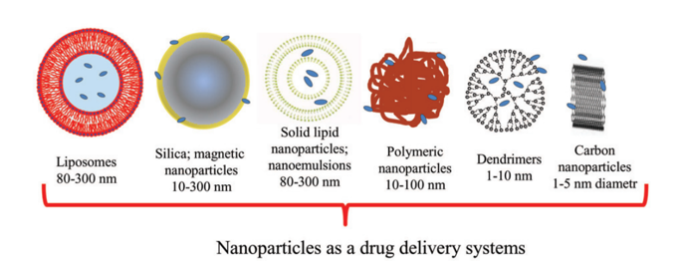A significant nanoparticle discovery that came to light in 1991 was carbon nanotubes. Where buckyballs are round, nanotubes are cylinders that haven’t folded around to create a sphere. Carbon nanotubes are composed of carbon atoms linked in hexagonal shapes, with each carbon atom covalently bonded to three other carbon atoms. Carbon nanotubes have diameters as small as 1 nm and lengths up to several centimeters. Although like buckyballs, carbon nanotubes are strong, they are not brittle. They can be bent, and when released, they will spring back to their original shape.
One type of carbon nanotube has a cylindrical shape with open ends, as shown in the following figure.

A carbon nanotube.
Another type of nanotube has closed ends, formed by some of the carbon atoms combining into pentagons on the end of the nanotube, as shown in the following figure.

A carbon nanotube with closed ends.
The properties of nanotubes have caused researchers and companies to consider using them in several fields. For example, because carbon nanotubes have the highest strength-to-weight ratio of any known material, researchers at NASA are combining carbon nanotubes with other materials into composites that can be used to build lightweight spacecraft.
Carbon nanotubes can occur as multiple concentric cylinders of carbon atoms, called multi-walled carbon nanotubes (MWCTs) and shown in the following figure. Logically enough, carbon nanotubes that have only one cylinder are called single-walled carbon nanotubes (SWCTs). Both MWCT and SWCT are used to strengthen composite materials.

A multi-walled carbon nanotube.
For More Details about the Carbon Nanotubes visit: Advanced Materials 2019
Brochure Details : https://advancedmaterials-research.pulsusconference.com/conference-brochure
WordPress: https://bit.ly/2HyNG3q
Blogger: https://bit.ly/2JTyTFV
Facebook: https://bit.ly/2LNOvba
Twitter: https://bit.ly/2t5iGDa






